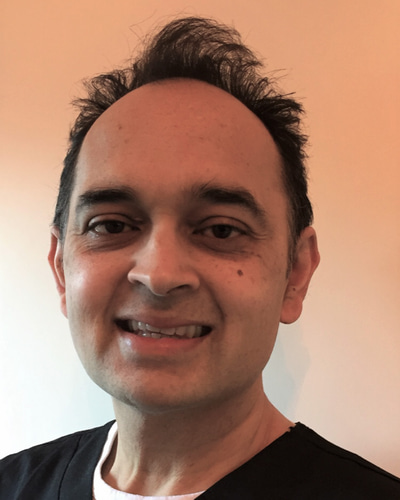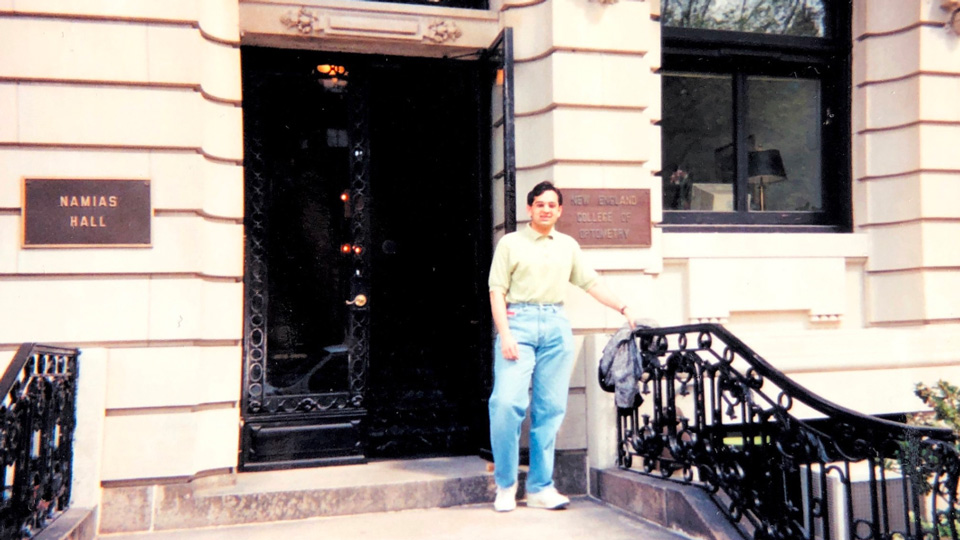- OT
- Life in practice
- Practitioner stories
- Reflections on practising as an optometrist in the US
Reflections on practising as an optometrist in the US
Optometrist and senior lecturer, Dr Rohit Narayan, on the differences between working in the UK and the US
5 min read 5

Dr Rohit Narayan
12 March 2024
When Dr Rohit Narayan was working in the UK as a newly qualified optometrist in the early 1990s, he found himself wanting more from his professional life.

Dr Rohit Narayan
Dr Narayan is now a senior lecturer at Anglia Ruskin University.
“I felt dissatisfied with clinical practice and the service I could offer my patients,” he said.
“I realised that my only option if I suspected pathology – even something as minor as allergic conjunctivitis – was to write to the GP or refer to the eye clinic. I felt that a number of conditions could be dealt with by optometrists,” Narayan shared.
This desire to extend his professional boundaries saw Narayan make the bold decision to pursue an optometry conversion course in Boston, Massachusetts at the New England College of Optometry.
“I thought, ‘Let me go to a country where they are actively doing therapeutics’,” he said.
Narayan was able to meet the financial obligation by relying on savings that he had accumulated during his five years of practice as an optometrist in the UK. This, coupled with meeting the immigration requirements, paved the way for him to study and practise in the US.

Dr Rohit Narayan
Dr Rohit Narayan outside his halls when he was studying at the New England College of Optometry in Boston, Massachusetts.
The course represented a period of intense study, with the four-year doctor of optometry syllabus condensed into a two-year programme of study.
After finishing his conversion course, Narayan undertook further study to successfully complete licensing for California, Arizona, and Nevada.
Narayan elected to move to the West Coast of the US, where he practised in a variety of settings – both multiple and independent.
He shared that there is a greater degree of separation between clinical care and the retail aspects of optometry within the US.
“In some practices I worked in, the separation between retail and clinical services was quite literally a wall down the middle of the building, with two separate entrance doors,” Narayan said.
“You make all of the clinical and refractive recommendations, and give the patient their prescription, and they walk out of your office and over to the retail side,” he said.
Narayan shared that patients are accustomed to paying for eye care in the US.
“Patients are coming to you as an independent eye doctor. They pay for the privilege of your clinical expertise. You must charge appropriately and be unapologetic about that,” he explained.
Within the independent private practice where Narayan worked for nine years, there was a focus on putting patients at the heart of the business.
“We had a mantra within the practice: ‘The only KPI we care about is our patients.’ If you look after them, they will look after you,” he said.
“We made the profits required to make the business viable, but with a patient first approach,” Narayan added.
Working in the US was not without challenges. Narayan reflected that he will not miss the administrative burden created by a system based on insurance payments.
“We employed a staff member just to deal with the vision and medical insurance paperwork generated. Additionally, offering therapeutic services did require the logistics of optometrists being on-call 24/7 for out-of-hours emergencies,” he said.
The separation between retail and clinical services was quite literally a wall down the middle of the building, with two separate entrance doors
In 2010, Narayan moved back to the UK to be closer to his elderly parents. He found that optometry had transformed since he had last practised in the country.
“Now times have moved on tremendously. It was exciting to be back in the UK,” he said.
“There is a greater clinical scope of practice than when I left. A number of hospital services are beginning to be outsourced into the community and, once reimbursement levels become more realistic, and begin to pay for chair time, this will enable a more holistic way of practising,” he said.
Narayan qualified as an independent prescribing optometrist in 2012. He is now a senior lecturer at Anglia Ruskin University as well as serving as an assessor and examiner for the College of Optometrists.
For those considering practising as an optometrist overseas, Narayan highly recommends the experience.
“You will grow clinically and culturally,” he said.
“Would I do it again, if given the choice? Yes, I would. The education I received opened doors and expanded my horizons beyond core optometry,” Narayan emphasised.
He shared that the experience of practising in the US gives him a different perspective on the UK.
“It gives you a very different lens to look through. No country is perfect. But you can see pros and cons of every country that you practise in,” Narayan highlighted.


Comments (5)
You must be logged in to join the discussion. Log in
Muhammad-Bilaal29 March 2024
A unique insight and a fantastic article
Report Like 104
djwhitak15 March 2024
To John G - I'm not exactly sure how your anti-CoO/AOP feelings have come about, but to say that they are 'all about refraction and selling product' is pretty disrespectful. If you don't like it, work to change things within the profession.
Report Like 106
Anonymous15 March 2024
The patient’s medical insurance would be charged for the (red eye) office visit and not the patient directly. I suppose its not too unlike MECS, although the clinicians in the US set their own fees which are approved by the insurance firms.
Report Like 139
Anonymous15 March 2024
Providing proper clinical services, but not just to those who can afford it
Report Like 133
John Gurney13 March 2024
Great article Rohit, and your day is similar to mine in my autonomous community ophthalmology clinics.,having not practiced traditional optometry/ optician work at any time in my working week and havent done for 7-8 years.
I have been saying for years we need to follow the US OD module for those that wish to provide proper clinical services , but this have fallen on deaf ears with both the COO and AOP, who seem to think thet its all about refraction and selling product.
Anyway well done on the move and I wish you every success .
Report Like 126